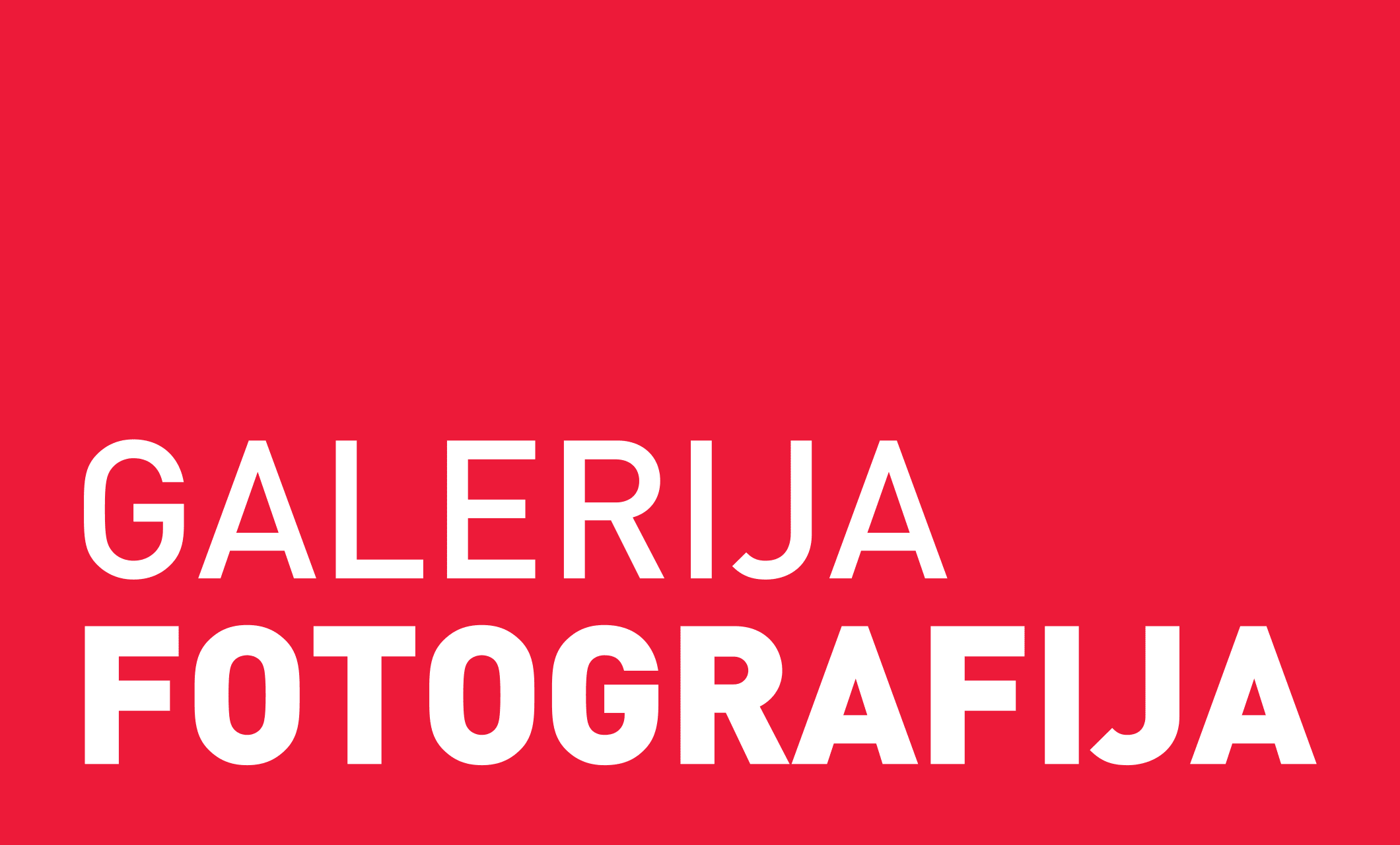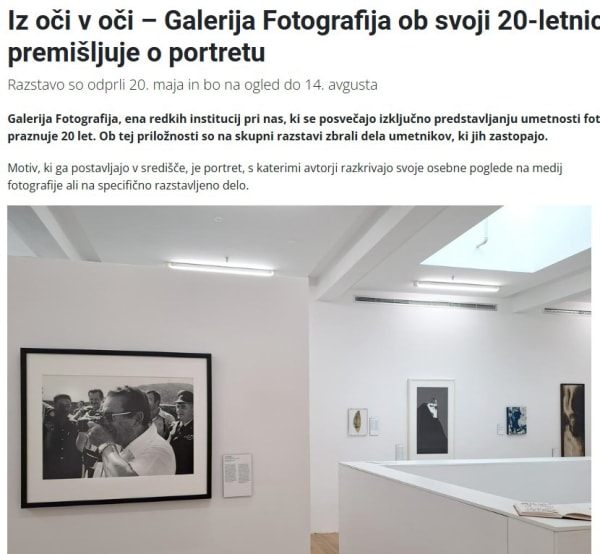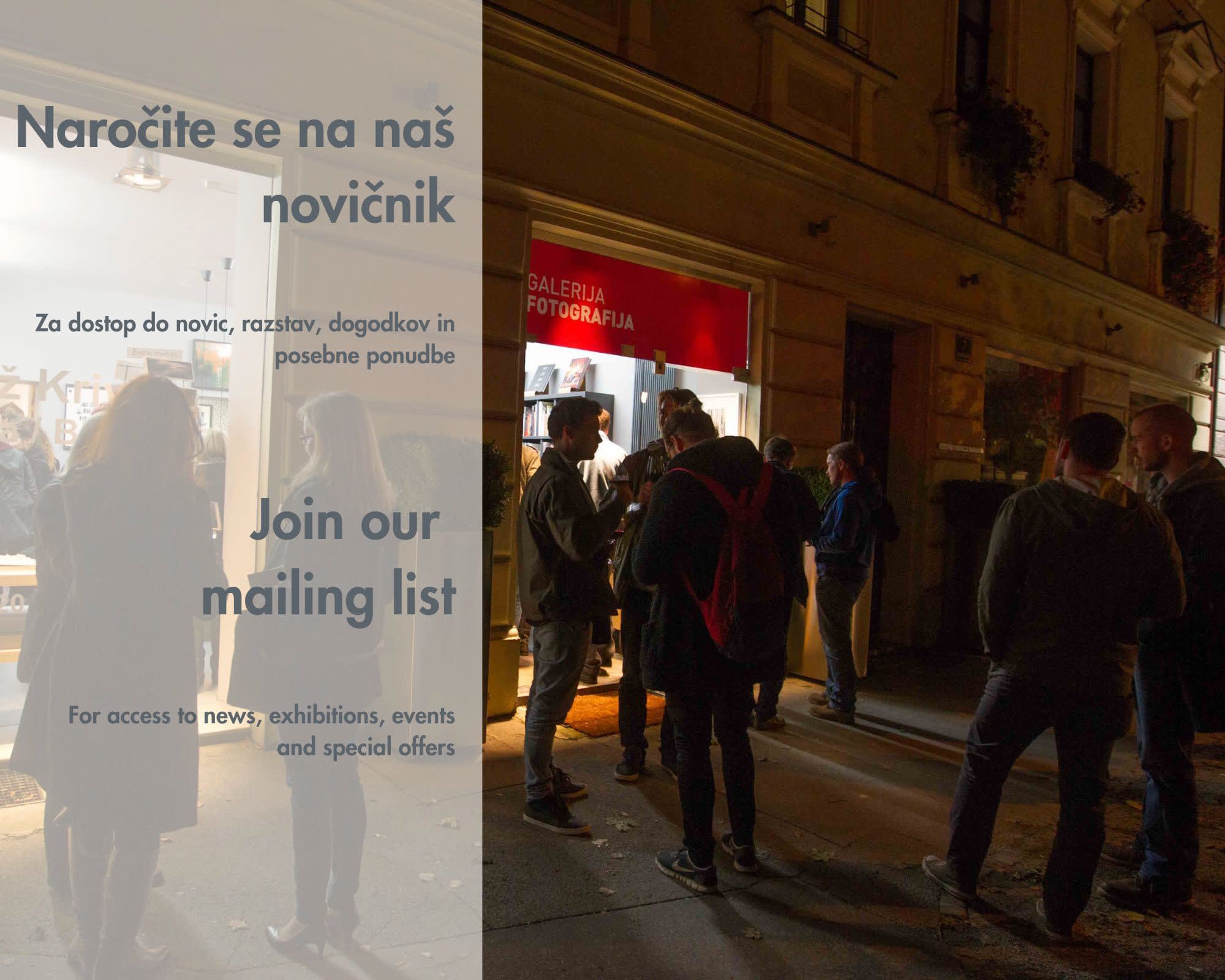Participating in the exhibition:
UROŠ ABRAM, ROGER BALLEN, JANEZ BOGATAJ, BOJAN BRECELJ, SIMON CHANG, DK, BORIS GABERŠČIK, CIRIL JAZBEC, STOJAN KERBLER, TEREZA KOZINC, MATJAŽ KRIVIC, ANDREJ LAMUT, DIANA LUI, TILYEN MUCIK, NIK ERIK NEUBAUER, BOŠTJAN PUCELJ, JANEZ PUKŠIČ, SARA RMAN, BLAŽ ROJS, LUCIJA ROSC, EURO ROTELLI, KLAVDIJ SLUBAN, METKA VERGNION, ANA ZIBELNIK and JOCO ŽNIDARŠIČ.
Curated by:
HANA ČEFERIN and BARBARA ČEFERIN
FACE TO FACE
The exhibition entitled
Face to Face, displaying works by twenty-five photographers, focuses on the motif of the portrait, which is certainly not the most popular motif in contemporary photography. Portraiture thrives largely within the field of documentary photography, while it is less emphasised in conceptual photography. The reasons for this may be that portrait photography is the most dominant or common of all types of photography that we encounter in our daily lives. From official portraits on ID cards and passports, profile pictures on LinkedIn, selfies on Instagram, to the faces on billboards that companies push on us as the only synonym for beauty, we are constantly surrounded by images of people. We feel the need to immortalise our loved ones as well as ourselves, but photographic images are often a reflection of the photographer rather than the sitter. The essence of an (artistic) portrait is not a veristic depiction of a person or their personality, but rather the photographer's intention.
Historically, portraiture in the context of art has been linked to the concepts of power and status, since it was primarily the wealthier people who could afford to produce it, while on the other hand, especially bourgeois portraiture, which had been established in Flanders since the 15th century, helped to reinforce the social status of the sitter and to paint them as they wished to be seen. The development of photography in the second half of the 19th century made it considerably cheaper to acquire one's own image, and brought portraiture reliably into homes, newspapers and administrative processes – into basically all areas of life. The photographic portrait has been the central focus of the medium since the development of the daguerreotype and has remained so to the present day. But whereas it was initially believed that photography had the power to show a person as they really were, and even to embody their personality and character, today it is clear that photography does not show a person objectively. Portraiture is a combination of different approaches to photography, from framing, attributes, style and the photographer's intention in portraying the subject. Take, for example, any colonial photograph of Tahitian natives from the early 20th century, which aimed to completely dehumanise the subjects under the guise of anthropological objectivity, or, on the other hand, the idealised images of Queen Victoria that circulated around the UK in cartes-de-visite format, portraying the Queen in a highly idealised role.
That is why, even with contemporary portraiture, we should perhaps first ask ourselves who is in the picture, and then certainly who took the picture and why, in what style, what these choices tell us about the photographer and the sitter and what reaction the photographer wants us to have. In what context is the photograph used, is it for documentary, conceptual or anthropological purposes? When we say that a portrait says more about the person who takes it than about the subject, we are referring to all the circumstances that led to the portrait in the first place. It is the way in which the photographer approaches their subject that is important in a portrait, more than in genre, landscape or other motifs. Sometimes it is the personal connection with the subject that makes the difference, sometimes it is the specific framing, sometimes it is the current state of the sitter. A portrait hides a duality that may not be revealed at first glance, but on closer inspection brings with it a whole host of unanswered questions.
Although it may seem that there are fewer images of this kind in exhibitions of contemporary photographic art, the motif is present in one form or another in the work of all the photographers participating in the exhibition. To celebrate the 20th anniversary of Galerija Fotografija, we invited artists who have helped pave the way for the gallery and whose works form the mosaic of Slovenian contemporary photography to select a portrait with an accompanying statement about their work. Twenty-five photographers gave their perspectives on this classic motif, revealing their personal views on the medium of photography or on the specific work exhibited. The portrait is revealed in a wide range of perspectives, from self-portraits to abstract forms, fashion and conceptual interpretations, and through the delicate dynamics between photographers and their subjects, reference is made both to the historical connotation of the (problematic) portrait and to its contemporary potentials.
Hana Čeferin




























